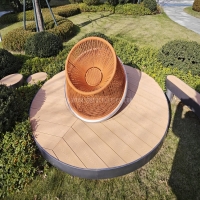Welcome to the website for landscape facilities products and knowledge.
What is the table’s performance in shaded versus direct sunlight areas?
When considering outdoor furniture placement, understanding how tables perform in shaded versus direct sunlight areas becomes crucial for both aesthetics and longevity. Tables exposed to direct sunlight experience significantly different conditions than those placed in shaded locations, affecting their performance, maintenance requirements, and overall lifespan.
Tables situated in direct sunlight areas face constant exposure to ultraviolet radiation, which can cause various materials to fade, crack, or deteriorate over time. Wooden tables may experience accelerated weathering, with finishes breaking down and surfaces becoming rough or splintered. Metal tables can become uncomfortably hot to touch during peak sunlight hours, potentially causing safety concerns, while plastic tables might warp or become brittle under prolonged UV exposure.
Conversely, tables placed in shaded areas generally maintain more stable temperatures and experience minimal UV damage. However, they face different challenges, including higher moisture retention, increased susceptibility to mold and mildew growth, and potential issues with insect infestation. The reduced sunlight can also lead to prolonged dampness, which may cause metal components to rust faster and wooden surfaces to rot if not properly maintained.
The performance variation extends beyond mere durability. Tables in direct sunlight often require more frequent cleaning due to dust accumulation and bird droppings that bake onto surfaces. Meanwhile, shaded tables might need regular antifungal treatments and better ventilation to prevent moisture-related damage. Temperature fluctuations throughout the day cause materials in sunny areas to expand and contract repeatedly, potentially leading to structural weaknesses over time.
For optimal performance, consider the table's material composition when choosing its placement. Powder-coated aluminum and teak wood generally withstand direct sunlight better than other materials, while wrought iron and certain plastics perform remarkably well in shaded environments. Regular maintenance routines should adapt to the specific conditions—sun-exposed tables benefit from UV-protective sealants, while shaded tables require improved airflow and moisture control measures.
Ultimately, understanding these performance differences enables homeowners to make informed decisions about table placement, material selection, and maintenance schedules, ensuring their outdoor furniture remains functional and visually appealing for years to come, regardless of its environmental exposure.
Related search:

Recommendation
Swivel chair-Specialty steel structure woven rattan leisure chair with rotatable design